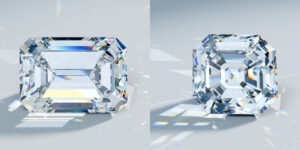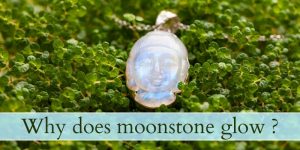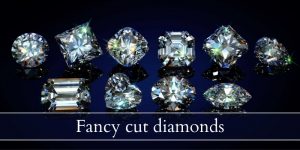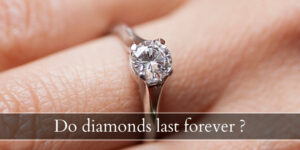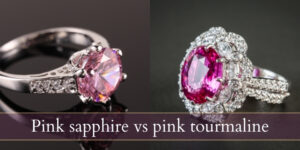Diamonds come in many shapes and sizes, some of them more popular, some of them sparklier, but all of the beautiful. This post is dedicated to figuring out pear cut diamonds. They’re elegant, classic, possibly with an antique vibe, and they’re not the most common engagement ring stone so you’ve got that going ! Let’s see what pear cut diamonds are and how to pick out a great one.
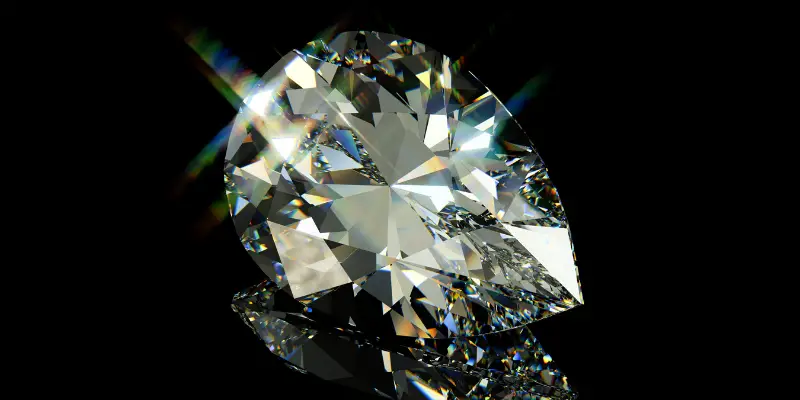
What is a pear cut diamond ?
The pear cut is a brilliant cut style, in the shape or a pear or teardrop. One end is rounded like a round brilliant, and one end is sharp and pointed, like a marquise. The pear cut is known for its sparkle, and it can be very difficult to get the right proportion. Compared to other elongated cut styles the pear isn’t the most popular but certainly isn’t the last.
Pear cuts are excellent for vintage or antique looks, and they work really well to bridge the gap between pointed and rounded cuts, if your jewelry incorporated both.
How did the pear cut originate ?
The pear cut is actually among the oldest diamond cuts out there, reaching all the way back to the 16th century! The design is much the same since then, with minimal improvement since there really wasn’t any need to improve on something as well thought-through as the pear cut.
The only difference between modern and antique pear cuts is the culet, which in modern pears is always closed. This was done to ensure the pear’s culet wouldn’t chip, but nowadays the settings are much stronger and can safely hold a pear without damaging the culet.
What cut quality is best for pear cuts ?
Cut quality can’t be graded for pear cuts, as they are not round brilliants and thus not standardized. But you can look at a few things to figure out whether a diamond is well cut, and most of these are taken into consideration for cut quality. You should look at the pear cut’s length to width ratio, its symmetry, its girdle, the culet, depth percentage. All of these together will give you a good idea of how the diamond will perform before you inspect it.
Length to width ratio is important to pears and the ideal version ranges from 1.45 to 1.75, with 1.50 the most pleasing pear for most people. The higher the ratio the skinnier the pear, such as the ones in Meghan Fox’s engagement ring (around 1.65).
Read also: Toi Et Moi Rings& Their Meaning
Cut symmetry looks at how well aligned the facets are, if they are lopsided, if one side perfectly mirrors the other, if one part of the diamond is thicken than the other, if the point of the pear is misaligned with the bottom, if the culet is off-center from the table, and also whether the wings and shoulders of the pear are symmetrical. Anything short of perfectly symmetrical will result in a poor light performance.
The girdle is the band between the crown and the pavilion, and its’ best when it’s very thin to slightly thick. In elongated sharp cuts expect the girdle to get gradually thicker near the tip, to provide better security for the diamond. Don’t go for too thin or too thick !
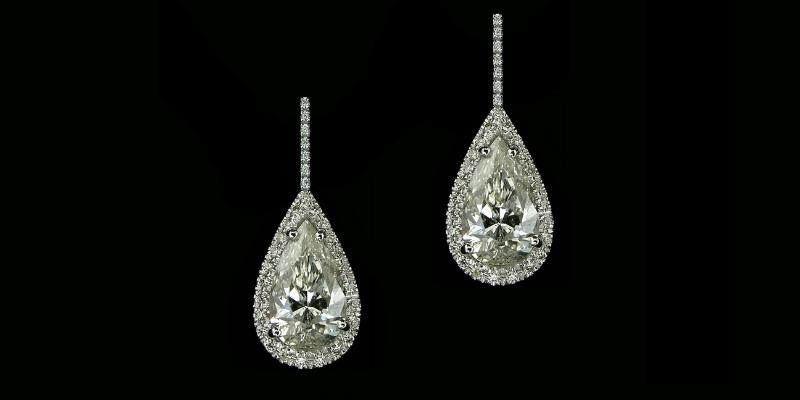
The culet is the point where all the pavilion facets meet, and you should look for a culet that is marked as closed, none, or pointed. An open culet, even a very small one, will leak light. Also keep in mind that in a pear cut the culet will be in the middle of the lower, larger part of the pear.
The depth percentage is how tall the diamond is from table to culet, compared to how long the diamond is. You’re aiming for 58-62% depth, and anything lower can be too shallow and lack contrast while anything higher can be too deep and look dull and dark.
Do all pear cuts have a bowtie ?
Yes, all pear cut diamonds have a bowtie but not all of them are immediately noticeable or show up as a harsh line. Bowties happen because the diamond’s center pavilion facets are extended, widened to account for the extra length of the diamond, and this creates a gray, dark area where light doesn’t reflect as much. Some like the look of a bowtie, some don’t. It’s really a matter of preference.
You’ll also notice that pears tend to show a beautiful crushed ice effect towards their tips, up to the very sharpest point at the top. There is another such effect at the bottom of the diamond, but it’s less impressive than the one at the top.
What is the best color for pear cut diamond ?
The best color grade for pear cuts is D-F and G-H. Anything lower than an H will show too much color, especially in the top half at the tip. Pears, like marquise and ovals, tend to concentrate color towards the ends, but in pears and marquises the sharp, shallow points are the ones that show the most color.
Read also: Diamond Colors Explained & Which Is Best
What is the best clarity for pear cut diamond ?
The best clarity for a pear cut diamond is anything between FL and VVS2. Anything lower, like a VS1 may still be safe but the top half of the pear will tend to show any inclusions. So we recommend sticking to VVS2 or higher, since these inclusions are generally tiny and barely noticeable, so a bit easier to hide in the diamond.
What is the best setting for a pear cut diamond ?
Pear cut diamonds work best in prong settings, but you absolutely need a V prong at the tip of the pear. The V prong is there to protect the tip from scratches and chipping, so it adds security to the setting.
Another safe setting that also looks beautiful on a pear diamond is the bezel setting. This ensures absolutely all sides of the pear are protected. There is less light coming into the pear this way, but it’s also the best way to protect any gemstone, even diamonds.
If you’re looking to wear the pear as a solitaire, keep in mind they’re a bit difficult to style due to the pointed tip, just like a marquise. But, since it has a rounded wide bottom it might be a bit easier, and it can always look great with a dainty halo, or some accent stones.
Are pear cut diamonds expensive ?
Pear diamonds are a bit expensive, yes, since they’re one of the more popular brilliant cuts. A 1 carat VVS2 clarity and H color pear goes for about $6,200, and upping the color and clarity will considerably raise the price. By comparison pears are cheaper than round brilliants, but they are more expensive than emerald cuts, and right about as much as an oval or marquise.
If you’re looking to get a batter deal, you can try lab grown diamonds. These are still diamonds but grows at a faster rate, in a controlled environment, and they sell for half the price. The quality is often better, meaning you can have easier access to whiter, clearer, larger diamonds than if you were buying natural.
If lab grown is not an option, then perhaps moissanites may be good. They’re sparklier than diamonds and they throw a bit more rain bow light, so it’s best to get your moissanites in a crushed ice style (smaller facets and more of them)

I’m the main author for jewelrymaterialguide.com. I started this site after we did tons of research before our wedding and noticed that there is information about rings, jewelry, and so on that is really hard to find on the internet.

